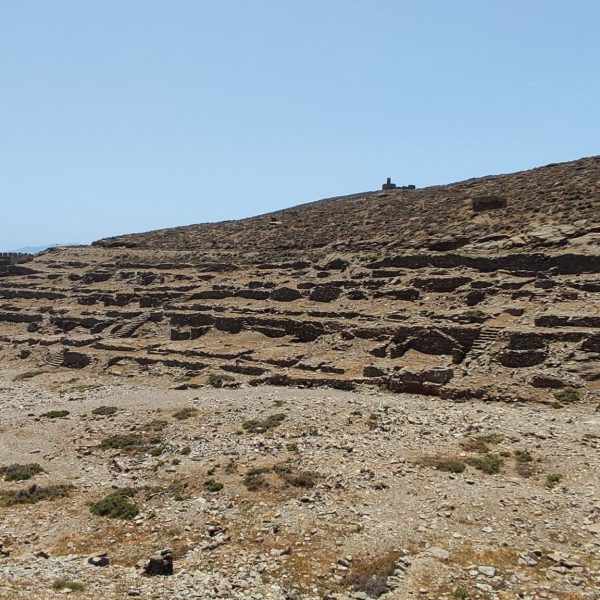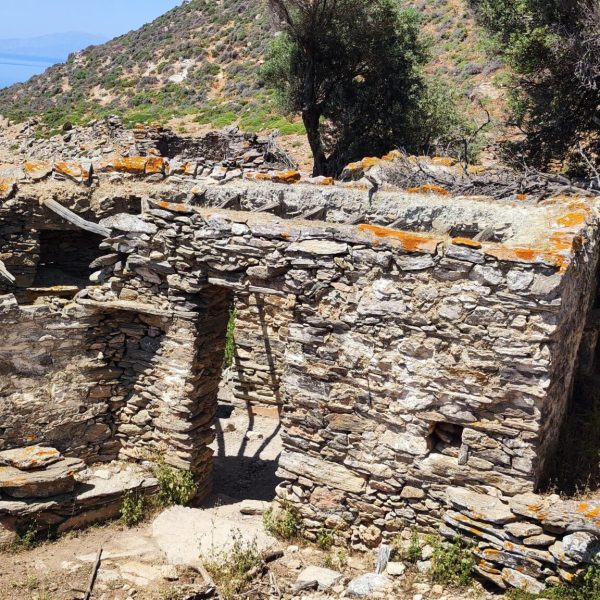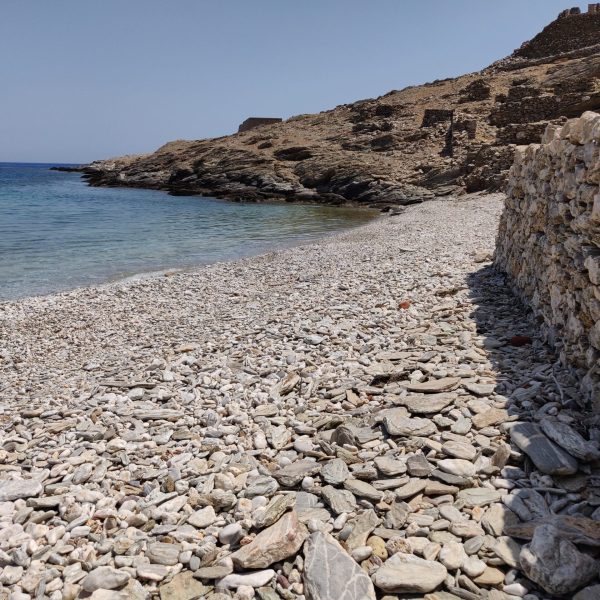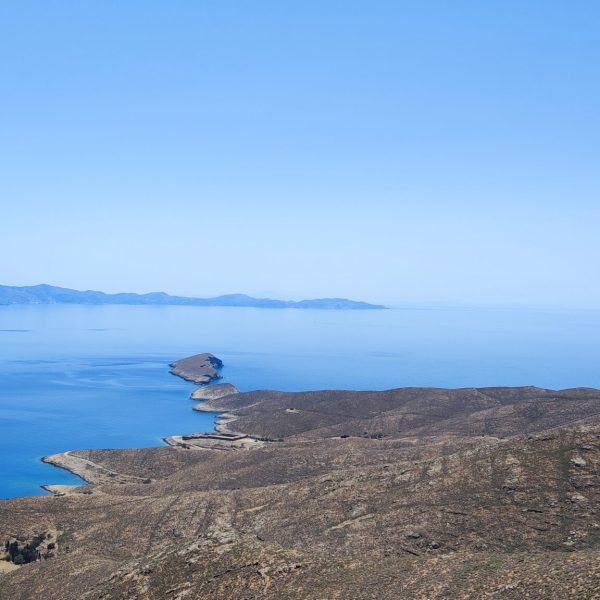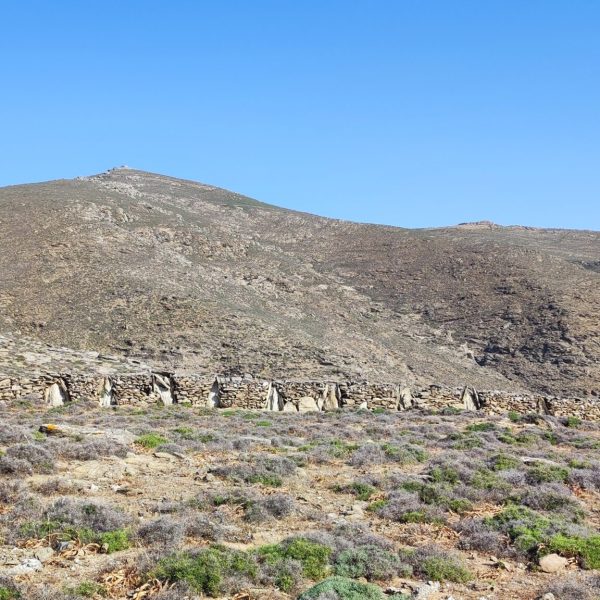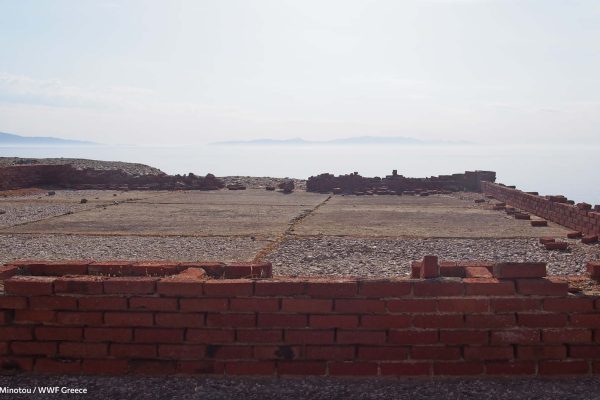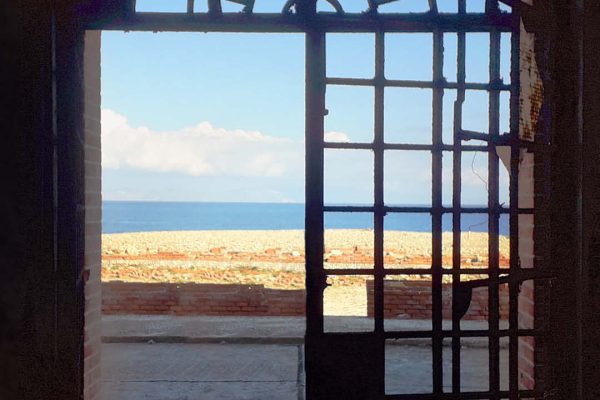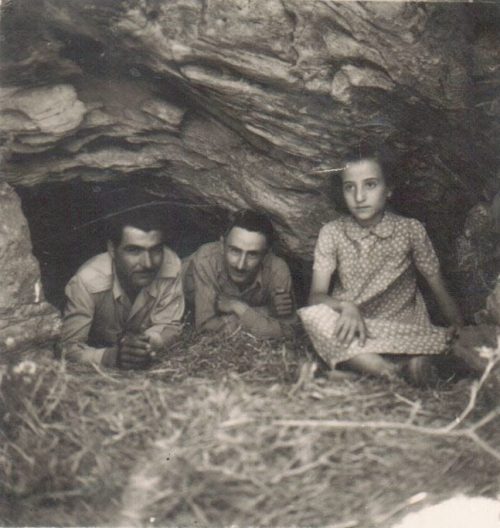The island
Gyaros / The island
Positioned in the heart of the Cyclades, Gyaros is located between Andros, Tinos, Syros and Tzia. Its total surface area is 17.76 square kilometres and the coastline is 33 kilometers. Administratively, it falls under the Municipality of Syros-Ermoupoli. There is no regular connection to the surrounding islands.
Gyaros is first mentioned in the Odyssey when Homer describes Poseidon’s punishment of Aedas the Locrus for the rape of the fortuneteller Cassandra. When the god found out, he struck with his trident the part where Aias stood in the sea and submerged it , splitting the Gyarien rock (Gyraien Petrin). In ancient times, Gyaros was an independent municipality that minted its own currency. During Roman rule, the island functioned as a place of exile. Those who questioned or opposed authority were banished there, such as the Stoic philosopher Musonios Rufus, who was exiled by emperor Nero in the 1st century AD with the false accusation of being a conspirator.
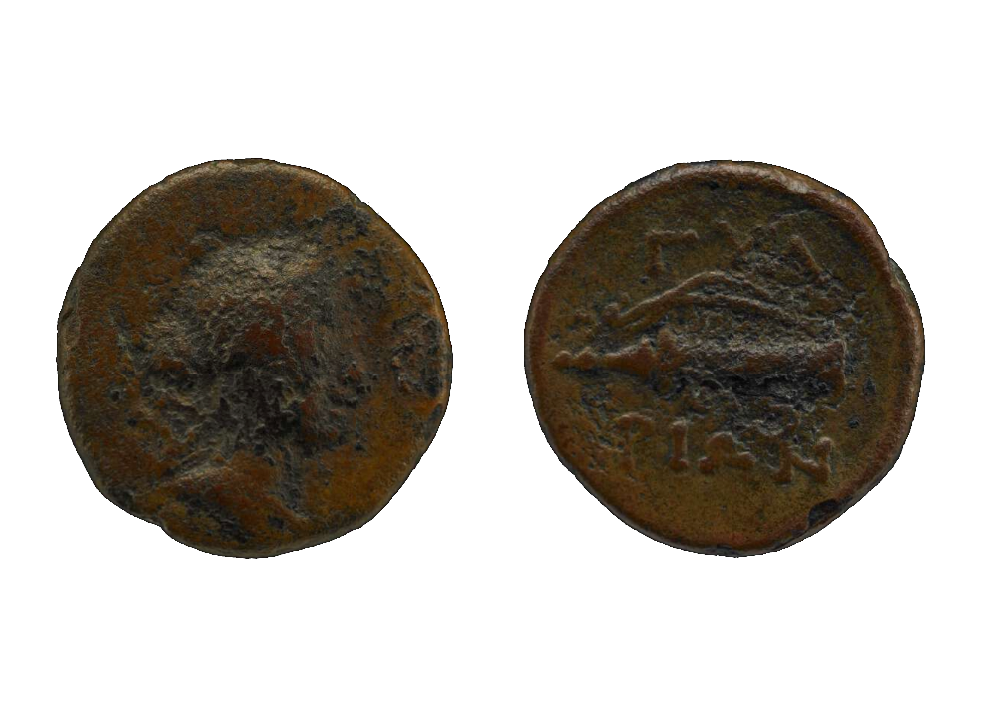
Coin of Gyaros (Source: British Museum Collection)
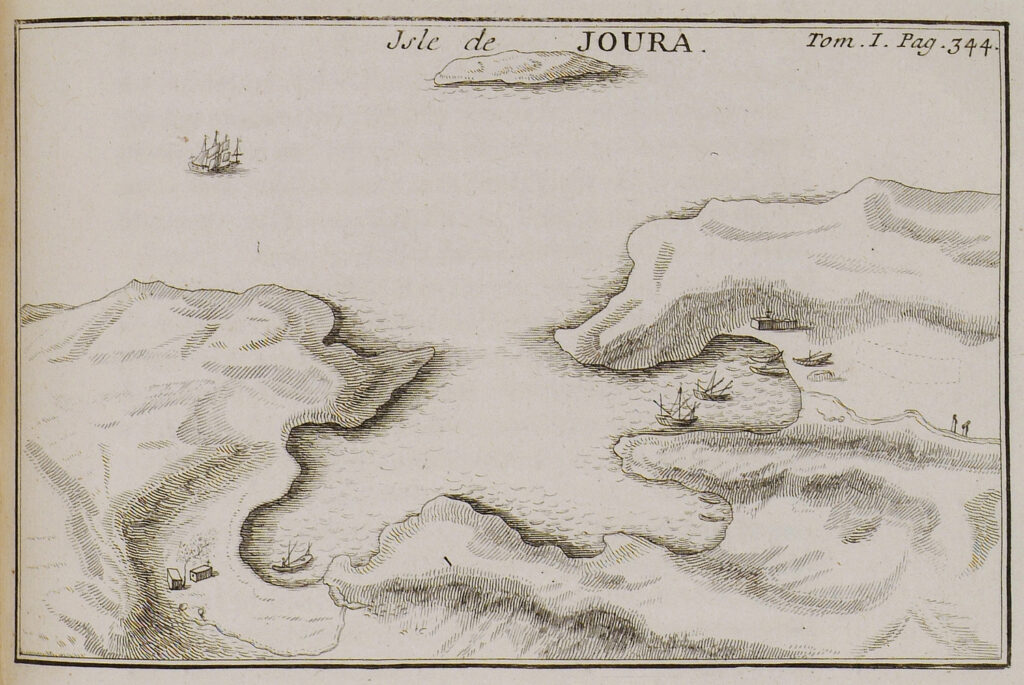
Engraving of Gyaros by the French botanist Joseph Pitton de Tournefort
In the following centuries, visitors described Gyaros as a wild island, with few inhabitants surviving under challenging conditions. Characteristic is the description of the French botanist Joseph Pitton de Tournefort, who for two years (1700-02) discovered the islands of the Archipelago and the Near East. In his book Voyages au Levant, he writes about Gyaros: “The Romans knew what they were doing when they exiled criminals to this island. There is not a more barren and unpleasant place in the whole Archipelago. There are not even common plants in this place. We saw nothing but large rats, perhaps of the same breed as those which compelled the inhabitants to leave it, as Pliny relates.”
Gyaros was not always uninhabited, but it has always been sparsely populated.
The course of the Yiuras went hand in hand with that of their neighbour Syros since it was considered an integral part. Documents from the 16th century confirm that 3 to 4 families of stock-breeders from Syros with recognized property rights had already settled there for a long time and, during Turkish rule, paid a property tax to Syros.
The so-called Syrians-Ayurgians extracted wool, milk and butter from sheep and meat from pigs and goats, sought after products on the nearby islands. They cultivated vines and barley, ground in the hand mill. Each family had their beehives and boat, with which they fished and sailed to the nearby islands.
They built their houses, fences and dry stones by themselves, following the ancient traditional bioclimatic Cycladic architecture. The centuries-long symbiosis with nature endowed them with a deep knowledge of the limitations and possibilities of the natural environment. Thus, the experienced builders used the morphology of the ground, the heat-insulating properties of stone, soil, and wood and the shading of the vegetation to protect themselves from the elements of nature, ensuring that the settlements had the appropriate orientation, to receive the maximum solar radiation mainly during the winter months and secure comfortable conditions inside the buildings and settlements – ventilation, thermal insulation, lighting.
The contribution of the residents of Gyaros to the National Resistance during the Second World War against the Occupation forces was crucial. In May 1943, an English submarine brought a radio to the island. The residents offered shelter to the Radio Operator, Giorgos Valavanis, from Crete and Observer, Costas Demoulas, from Piraeus, who had the task of spotting the occupation forces’ ships of the Northern Cyclades and radioing the British allies to bombard them.
Gyaros was also a transit station during the fleeing of patriots, as the inhabitants provided shelter to the Greek patriots until a submarine could transport them to the Middle East.
In 1948, the Greek state expropriated the properties of the last 31 residents to build the prisons.


